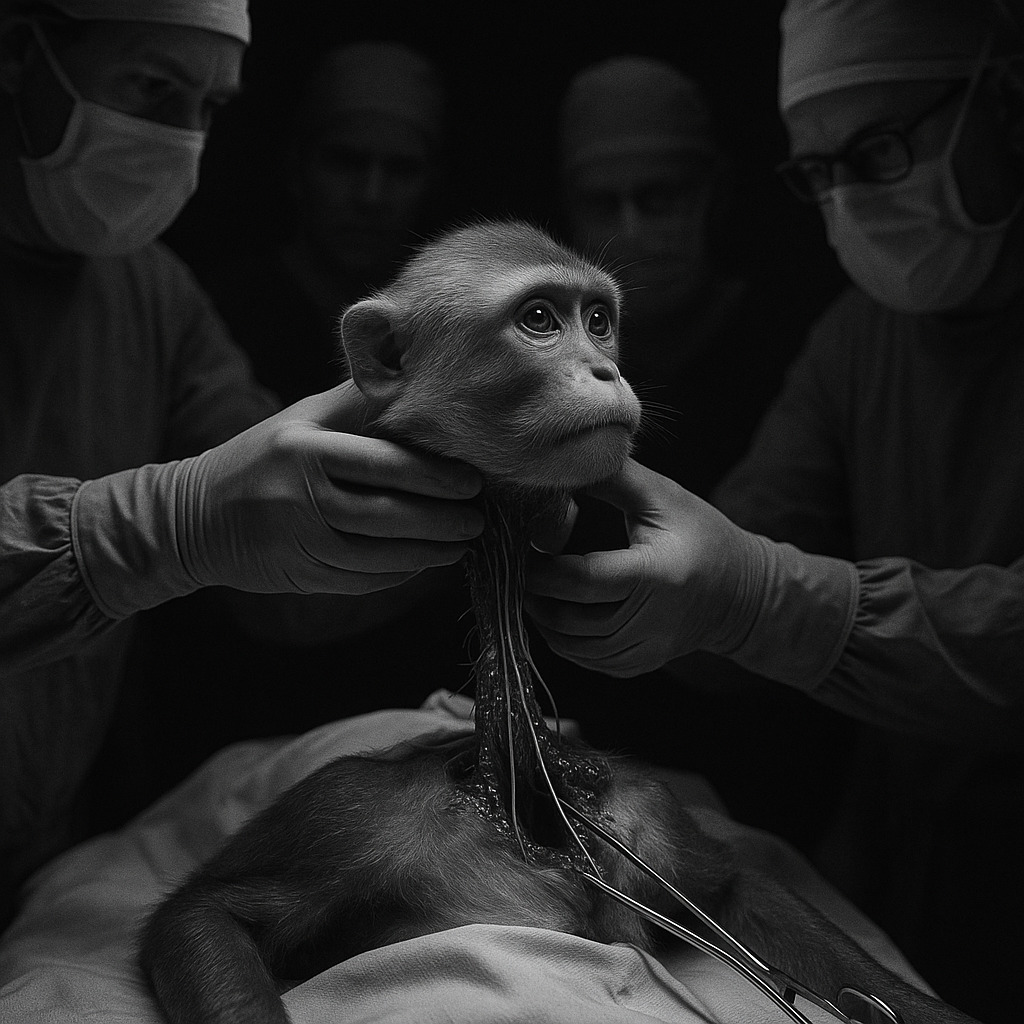The Day They Separated the Mind from the Body: The Monkey Head Transplant
What happened in 1970 was real
A cold, sterile operating room. Two identical rhesus monkeys, anesthetized and motionless. A team of surgeons works in silence as scalpels and forceps trace the line between what is alive and what should remain untouched.
What happened in distant 1970 was real.
Science doesn't want to talk about it: it causes discomfort, uproar, and shatters long-held certainties.
Yet it truly happened. A monkey's head was removed from its body and attached to another. No horror film, no urban legend: it actually happened.
It was 1970. The man behind the operation was an Ohio neurosurgeon, Dr. Robert J. White. And that head, after the procedure, opened its eyes.
The Forgotten Pioneer: Vladimir Demikhov and the Two-Headed Dog
To understand the roots of this surgical madness, we must travel back to the Cold War.
In the Soviet Union, Vladimir Demikhov, a visionary biologist, carried out transplant experiments that would make even science fiction writers flinch. In 1954, he created a two-headed dog by grafting the head of a puppy onto the body of an adult dog.
The image — shocking and tragically real — went around the world. The second head moved, licked, reacted to stimuli, though it died after a few days. It was a living chimera, an experiment aimed at understanding tissue compatibility and vascular surgery.
Demikhov was mocked in the West, but he paved the way for modern organ transplantation.
Robert White and the Monkey Head Transplant
Building on that legacy, Robert White set out to answer a terrifying question: could the brain survive independently from the body? Was it possible to transplant consciousness?
In 1970, at the Cleveland Clinic, White performed what many thought impossible: he removed the head of a rhesus monkey and transplanted it onto the body of another, maintaining cerebral blood flow using a complex system of pumps and tubes.
The result was disturbing: the monkey opened its eyes, followed the surgeons' movements, tried to respond. It was alert. But it couldn’t breathe on its own or move its body — the spinal cord had not been reconnected.
The monkey head transplant subject died within days, just as expected.
Science or Sacrilege? The Ethics Shattered
White was praised by some for his bold experimentation, but heavily criticized by others. The head transplant surgery raised burning questions that remain unresolved:
What makes us human?
If the brain can live without the body, is our identity entirely located in the brain?
And above all: is it morally acceptable to go this far, even in the name of science?
Animal rights groups were outraged. Bioethicists condemned the operation as “blind science,” a technological blasphemy. But White stood firm: if we could one day save a mind by giving it a new body — shouldn’t we at least try?
The Dream Returns: Sergio Canavero and Project HEAVEN
The story faded into obscurity... until decades later, a new name reignited the debate: Sergio Canavero, an Italian neurosurgeon.
In 2015, he announced an audacious plan: to perform the first human head transplant, using a technique he called HEAVEN (Head Anastomosis Venture).
With support from Chinese doctor Ren Xiaoping, he carried out tests on cadavers and monkeys. Canavero claimed to have successfully reconnected spinal cords using a special substance called PEG (polyethylene glycol).
The scientific world reacted with skepticism, and ethical critics responded with horror. The volunteer patient, Valery Spiridonov, later withdrew. The human head transplant was never performed.
From Mythology to Medicine: The Archetype Returns
This obsession with replacing the head is not new. In Hindu mythology, the god Ganesha was brought back to life with the head of an elephant after his own was lost.
In the classical world, Asclepius could revive the dead by reassembling their bodies. In Christian legend, saints like Denis of Paris continued speaking even after decapitation.
Were these myths just symbols — or distant echoes of experiments, intuitions, or dreams of immortality?
Science may have changed its tools, but it chases the same ghosts.
The Price of Consciousness
The monkey head transplant subject couldn’t speak — but it could look. It was alive, trapped in a body it didn’t control.
There may be no more haunting image of humanity’s ambition to split the soul in two, to dissect the invisible, to play God with scalpels and microscopes.
Or perhaps — as White believed — consciousness deserves a second chance, even when the body fails.
Today, the head transplant remains a dark dream, a boundary line between science and ethics, between man and the abyss.
But one thing is certain: the day a head opened its eyes on a body not its own, medical science was never the same again.








Leave a Comment